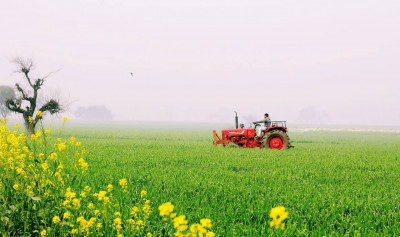How agriculture e-commerce is shaping up amid COVID-19 crisis
Indian agriculture is a $350-billion industry powered by close to 100 million small and independent farmers and an equal number of support laborers. In the last few years, the sector has undergone a massive digital transformation, with e-commerce leading the baton for it.
As per the published reports, it is estimated that the overall e-commerce sector in India will be around $120 billion in revenue by the end of 2020, however, there is no definitive figure on the share of agriculture in the overall e-commerce pie. The only testimony to the growth has been the slew of investments that have gone into the Agri-e-commerce players.
However, the unprecedented emergence of COVID-19 has had a riveting impact on the overall agricultural sector. Farmers in many areas are facing a shortage of labourers, agri-input, machinery, and other necessary items, causing a delay in sowing/ harvesting of crops. As a result, the agri-e-commerce sector is also witnessing and bearing the halo effect of this impact.
State of Agri-Ecommerce
For the record, Agri-e-commerce comprises pre-harvest and post-harvest players. The post-harvest players are responsible for bringing the farm produce to the people, restaurants or service providers across cities and towns. On the other hand, the pre-harvest players are responsible for making the agri-input available to farmers either directly (at the consumer level) or at the retailer level. Hence, each category comprises of brands that are either directly catering to the customers or the businesses (retailer or large wholesale buyers). Let us now examine the impact of COVID-19 on post-harvest and pre-harvest players.
Firstly, the post-harvest players have registered considerable growth amid lockdown. Their daily orders and brand recall have gone up. As per a published report, the 21-day lockdown has given a fillip to this sector, with the number of orders increasing from three to five times for a normal day. It includes products such as vegetables, fruits, dairy products, cereals, and others. Some of the key players in the segment are Grofers, Big Basket, Amazon, and Country Delight. The prime reason for this growth is that the government has exempted these brands from lockdown. However, the overwhelming number of orders has led to a shortage of manpower and it was forced to cancel many orders. They are employing new people for their warehouses. As per the published reports, the estimated market size of online grocers in India is around $2 billion (in 2018).
Secondly, the pre-harvest players are witnessing a larger role in association with the state and central government towards the stabilisation of farming requirements in the coming times. It includes agri-input, machinery, seeds, and others. The overall agri-input market of India is estimated to be above $25 billion. During this period, the government was quick to notify the agri-input products under essential items and is working towards ensuring a consistent supply. However, due to inadequate logistic support, delay in necessary permissions at state, district and tehsil levels, there has been a lag in the delivery of the agri-input products to the farmers.
These players have been operating for a few years now and offer a common platform to farmers, buyers, service providers and agri-input/ machinery brands. They have a huge reach and offer a large catalog of products/ services. They deliver at the doorsteps of the farmer, thereby saving his time, effort and money and further helping in doing away with the middle man from the system. Several farmers have personally mentioned it to me that the e-commerce model has been extremely beneficial to them.
In times of COVID-19, they can be a great medium for the government to connect with the large and scattered farmer base. They can help move the agri-input/ machinery and reduce the time gap, owing to their established distribution system. In many states, the crops are ready to be harvested and sowing operations will start in full swing in a month from now. In such a scenario, the pre-harvest players can play a key role in reducing the burden on the government and help in keeping the agricultural sector afloat. I believe, the government should empower the input supply chain startups to deliver products and services to farmers. They will be crucial in delivery of seeds, crop protection and crop nutrition products to farmers, maintaining social distancing.
Over the years, the pre-harvest players have established a one-on-one connection with the farmers and are educating them about the crop, soil, medicine, weather forecast, loans, and many other subjects.
Today, farmers also understand the importance of the right knowledge for a better yield. We are already witnessing a behaviour change among the farmers as they are adapting to the digital transformation very rapidly, and this number is expected to grow exponentially. Owing to the e-commerce revolution, a farmer is now ordering products via app, website and moving towards digital payments.
Decision making for Indian farmer was primarily based on peer learning and experiential, while today there are millions of farmers who are using technology to solve these problems. This is Precision Agriculture 1.0 for India, powered by enabling transparency in supply chains by giving access to farm management solutions and backed by easy access to quality products. Massive Internet penetration has made this possible in the last couple of years. Every state has start-ups operating across the supply chain. In the current time of crisis, start-ups can play a big role in bringing the Food System of India on track. Overall, the agriculture e-commerce sector is growing very rapidly and there is a huge potential for growth in it. The good thing is that all the stakeholders of the agriculture chain have recognised this crisis and are working closely with the government to solve the situation.
(This article is authored by Tauseef Khan, CEO & Co-Founder, Gramophone, a start-up pioneering the digital agriculture – using data to guide a farmer in selecting the right agricultural input for maximum yield.)
















Share
Facebook
YouTube
Tweet
Twitter
LinkedIn